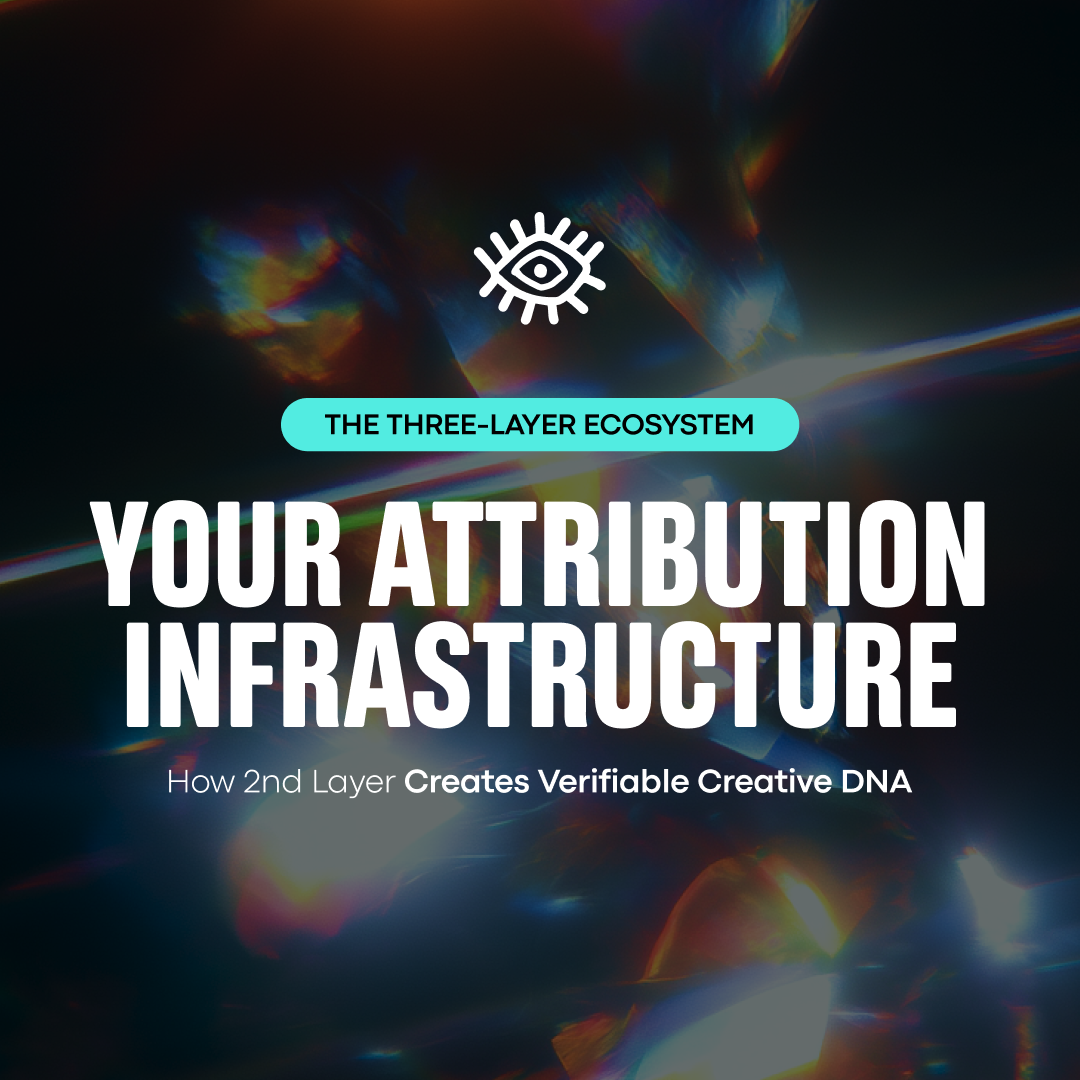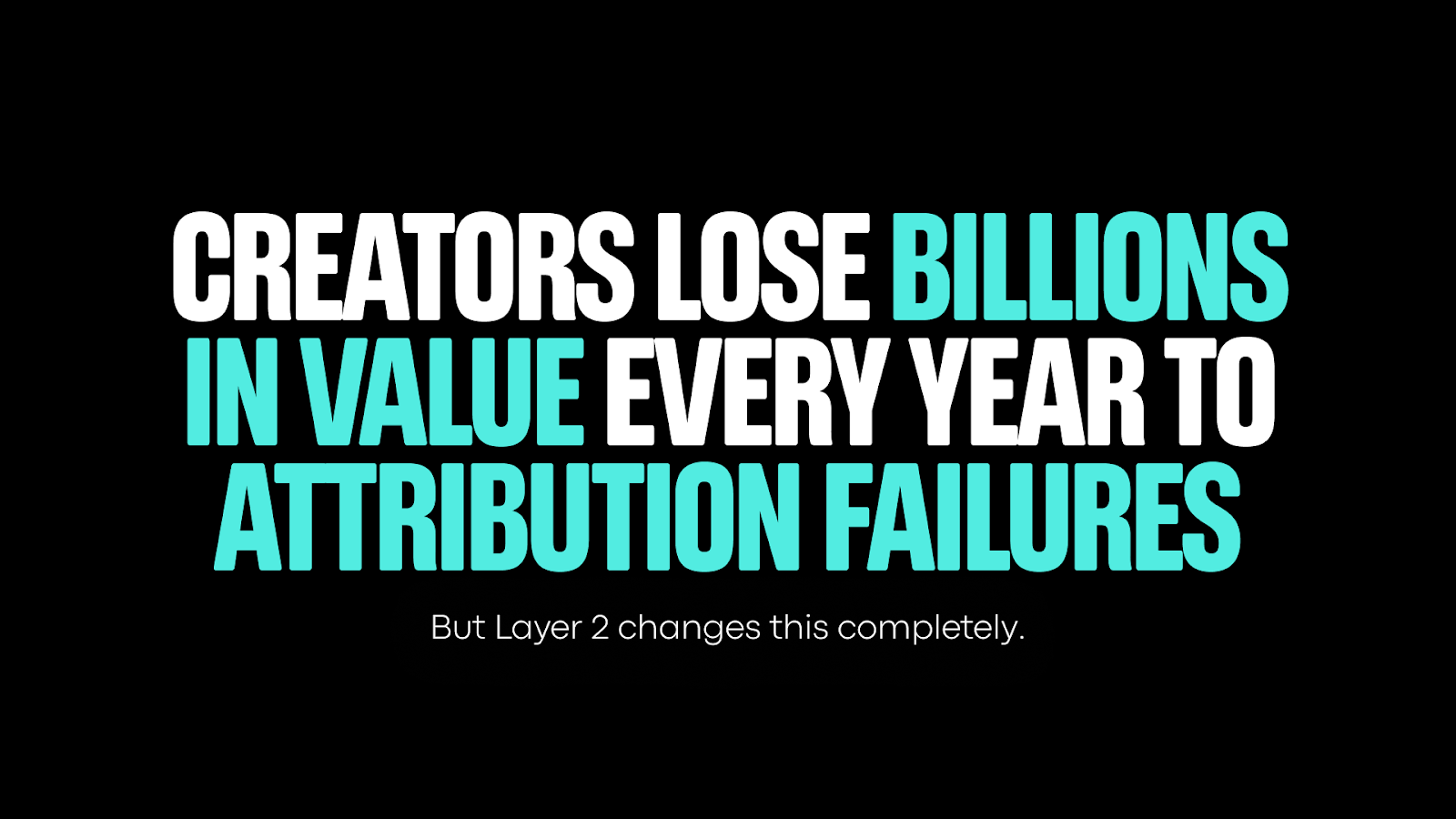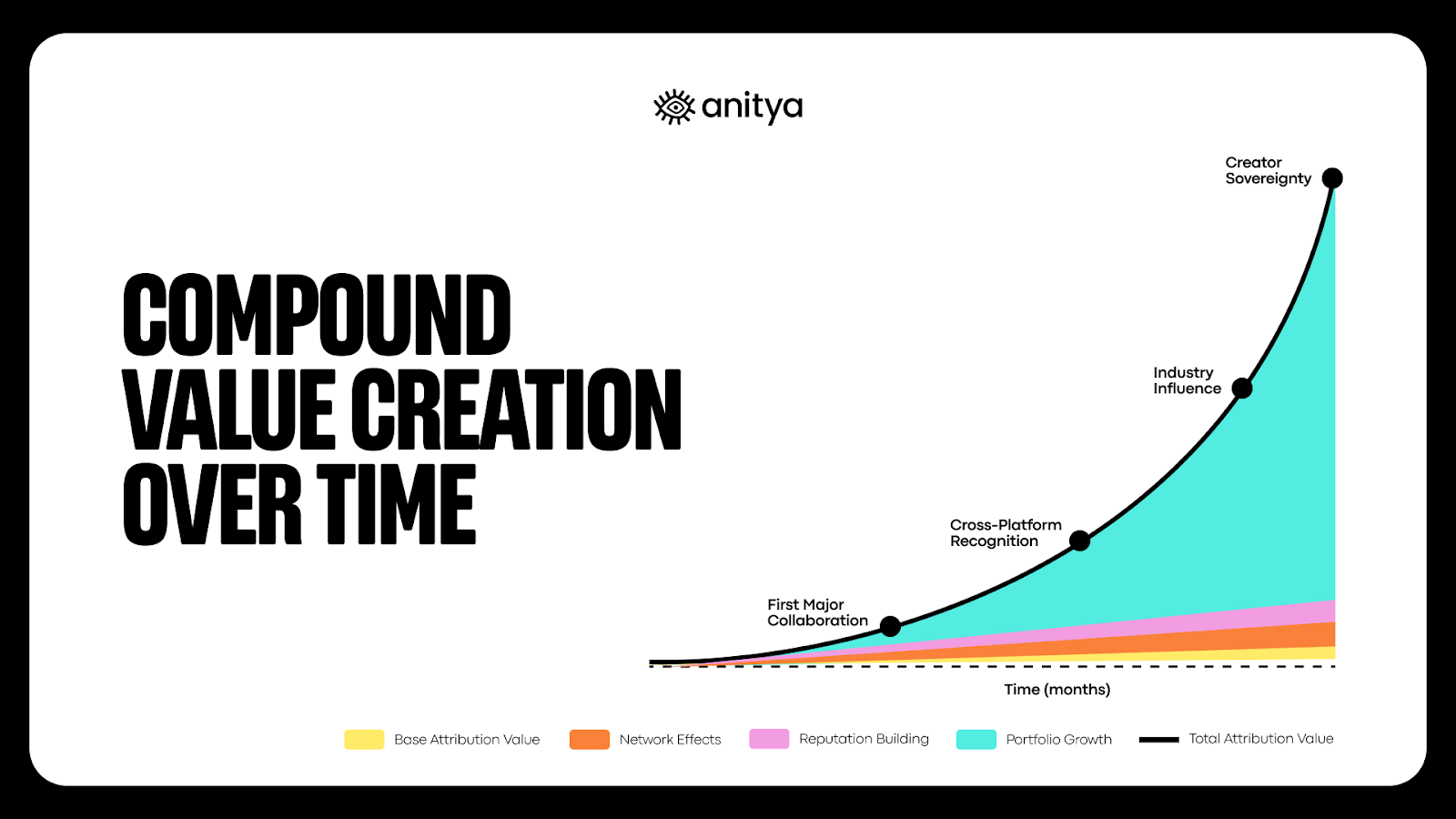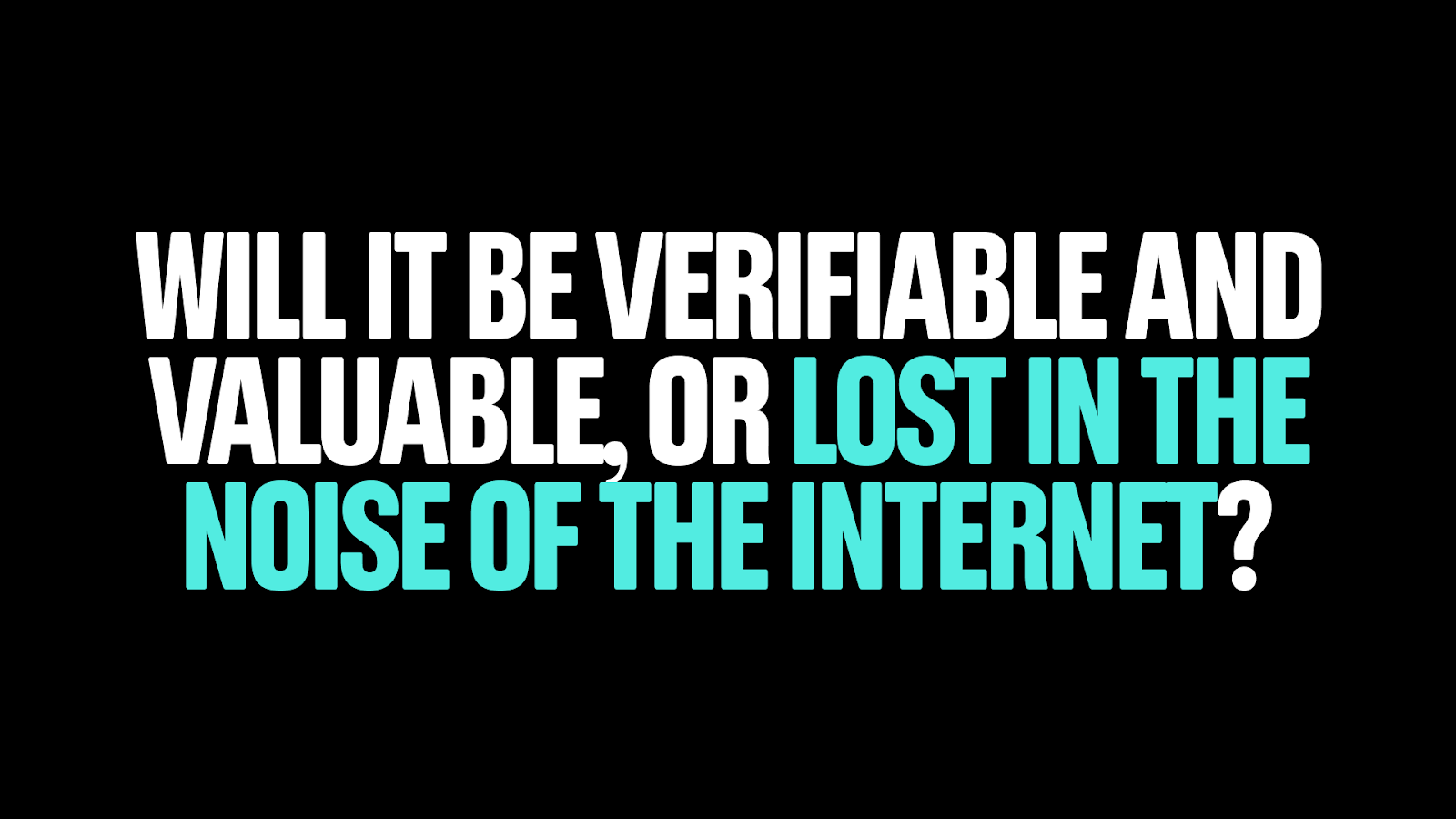How anitya's Second Layer Creates Verifiable Creative DNA
This is the third article in our 4-part series exploring anitya's three-layer ecosystem. In our first article, we explored the creator revolution happening now. In our second article, we showed how Layer 1 transforms the creation experience. Today, we dive into Layer 2: the attribution infrastructure that turns your creative work into verifiable assets.

Imagine if every time someone used your creative work—whether they remixed it, referenced it, or built upon it—you automatically received credit and compensation. Imagine if your creative contributions were as trackable and valuable as financial transactions. Imagine if your reputation as a creator was mathematically verifiable, not dependent on platform algorithms or social media followers.
This isn't a distant dream. This is Layer 2 of the anitya ecosystem: the attribution infrastructure that creates your verifiable creative DNA.
The Attribution Crisis Is Getting Worse
As we explored in our overview article, attribution breakdown is one of the fundamental problems crushing creators today. But the scope of this crisis is even larger than most people realize.
AI Training Without Consent. Major AI companies have trained on billions of creative works without permission or compensation. The European Parliament now demands "unwaivable rights to fair pay for creators in generative AI training"¹, but creators need infrastructure to claim these rights.
Cross-Platform Confusion. A single creative work might appear on Instagram, TikTok, YouTube, Pinterest, and dozens of other platforms. Tracking attribution across this ecosystem is nearly impossible with current tools.
Remix Culture Complexity. Modern creativity is collaborative and iterative. A single piece might involve contributions from multiple creators, AI assistance, stock assets, and community feedback. Traditional attribution systems can't handle this complexity.
Platform Lock-In. Your reputation and follower count are trapped on individual platforms. If you leave or get banned, you lose everything. There's no portable way to prove your creative contributions across the internet.
Legal Enforcement Costs. Even when you can prove someone stole your work, legal action costs more than most creators can afford. Individual creators have no leverage against well-funded infringers.
The result?

How Attribution Infrastructure Works
Layer 2 creates a comprehensive system for tracking, verifying, and monetizing creative contributions across the entire internet. Here's how it works:
Local Creative Process Recording
How It Works: Imagine installing a program on your computer, phone, or AR glasses that activates when you begin creative work. This software runs quietly in the background, capturing metadata about your creative process—which tools you use, how long you spend on different elements, what techniques you employ, and how your work evolves over time.
The system respects your privacy by only tracking creative actions you choose to verify, and you maintain complete control over what gets recorded and shared. Think of it as a creative fitness tracker that documents your artistic journey.
What Gets Recorded:
- Tool Usage: Which software, brushes, filters, or techniques you use
- Time Investment: How long you spend on different aspects of your work
- Process Evolution: How your work changes through iterations and feedback
- Collaboration Details: Who contributes what when you work with others
- AI Assistance: When and how you use AI tools in your creative process
This creates a detailed creative fingerprint that's unique to you and impossible to fake.
Efficient Blockchain Verification
The Technical Reality: Your creative process is recorded locally, then periodically batched and submitted as cryptographic proofs to the blockchain. Rather than storing every keystroke on-chain (which would be prohibitively expensive), the system creates compressed "proof of creativity" certificates that verify your work without overwhelming blockchain capacity.
Solana's Cost Advantage: We use Solana's infrastructure because transaction fees are extremely low—currently around $0.0066 per transaction² with base fees of just 0.000005 SOL (5,000 lamports) per signature³. This makes it economically viable to create attribution records for individual creative works.
Efficient Batching: The system doesn't store raw creative data on-chain. Instead, it uses cryptographic hash functions⁴ to create tamper-proof fingerprints of your work and process. Multiple creative actions are batched together and submitted as single transactions, keeping costs minimal while maintaining security and verification capabilities.
Think of it like a digital notary that timestamps and validates your creative DNA at key milestones, creating permanent, verifiable records without the cost of storing everything on-chain.
Cross-Platform Attribution Tracking
Plugin Integration: Lightweight plugins for popular creative tools (Photoshop, Figma, Blender, etc.) automatically track your work across platforms. When you publish content anywhere, the system creates attribution links back to your verified creative DNA.
Universal Creative ID: Every piece of work gets a unique identifier that follows it across the internet. Whether someone shares it on social media, includes it in a presentation, or remixes it into something new, the attribution chain remains intact.
Automated Detection: Computer vision and content matching algorithms scan the internet for uses of your work, automatically detecting when someone uses your creations—even if they don't credit you.
Smart Contracts for Attribution: When your work is used, smart contracts automatically distribute credit and compensation according to predefined rules. No manual invoicing, no payment delays, no disputes about usage rights.

The Economic Infrastructure
Layer 2 isn't just about tracking—it's about creating new economic models that reward creators fairly:
Portfolio-Based Staking
Creator Portfolio Staking: Stake tokens against your creative portfolio to earn rewards based on the usage and value of your work. The more your creations are used and appreciated, the higher your returns.
Experience Staking: Stake on specific experiences or projects you believe will succeed. Early supporters of breakthrough creative work earn rewards when those works gain popularity.
Reputation Staking: Stake on creators whose work you value. As their reputation grows through verified contributions, your stake appreciates. This creates a creator discovery and support mechanism.
Governance Staking: Participate in protocol governance by staking tokens and voting on platform development, fee structures, and community standards.
Instant Value Transfer
Micropayments: Every use of your work generates immediate compensation, no matter how small. A single image used in a presentation might earn cents, but across thousands of uses, this creates meaningful income.
Revenue Sharing: When someone builds on your work, you automatically receive a percentage of any revenue they generate. This incentivizes collaboration while ensuring original creators benefit from derivative works.
Attribution Dividends: As the overall value of attributed creative work grows, all contributors receive dividends proportional to their verified contributions to the ecosystem.
Cross-Platform Monetization: Earn from your work regardless of where it's used. A design created on anitya that goes viral on TikTok still generates attribution revenue for you.
Building Your Creative Reputation
Layer 2 transforms reputation from social media metrics to verifiable professional credentials:
Skill-Based Reputation
Verified Competencies: Your reputation isn't just follower count—it's mathematically verified skill in specific areas. The system tracks your proficiency in environmental design, character creation, interactive storytelling, technical innovation, and dozens of other creative disciplines.
Peer Recognition: Other creators can verify and endorse your skills based on actual collaboration experience. These endorsements are weighted by the endorser's own verified reputation.
Portfolio Performance: Your reputation grows based on how your work performs across platforms—engagement, usage in other projects, commercial success, and community appreciation.
Continuous Learning: The system tracks your skill development over time, showing how you've grown as a creator and in which areas you're advancing most rapidly.
Professional Credibility
Verified Project History: Every project you've worked on, every collaboration you've participated in, and every contribution you've made is permanently recorded and verifiable.
Attribution Score: A comprehensive metric that combines the reach, impact, and commercial value of your creative contributions across all platforms and projects.
Collaboration Rating: How well you work with others, based on feedback from actual project partners and the success of collaborative works.
Innovation Index: How often your techniques, styles, or approaches are adopted by other creators, indicating your influence on creative trends.
This reputation becomes a portable professional asset that follows you across platforms and throughout your career.
Real-World Applications
Layer 2 attribution infrastructure enables entirely new business models and creative opportunities:
AI Collaboration, Not Competition
Transparent AI Usage: When you use AI tools, that's clearly documented in your creative DNA. This becomes crucial as AI regulation evolves⁵, ensuring compliance with emerging transparency requirements.
AI Training Compensation: When AI companies want to train on your work, the attribution system enables automatic licensing and compensation. You maintain control over how your work is used while earning from AI development.
Human-AI Attribution: In collaborative works involving AI, the system clearly distinguishes human contributions from AI generation, ensuring proper credit and compensation for human creativity.
Quality Verification: As AI-generated content floods the internet, verified human creativity becomes more valuable. Your attribution score becomes a mark of authentic human creative work.
Cross-Platform Creative Businesses
Distributed Portfolio Management: Manage your creative identity across all platforms from a single dashboard. See where your work is being used, how it's performing, and what revenue it's generating.
Automated Licensing: Set licensing terms once, and the system automatically enforces them across all platforms. No more manual negotiations or licensing paperwork.
Collaborative Revenue Sharing: Work with other creators on complex projects with automatic revenue distribution based on verified contributions. No disputes, no manual calculations.
Global Creative Services: Offer your skills to clients worldwide with verifiable reputation and automatic payment processing. Your attribution score becomes your professional credential.
The Network Effect of Attribution
As more creators join Layer 2, the value increases exponentially for everyone:
Comprehensive Coverage: The more platforms and tools that integrate attribution tracking, the more complete your creative DNA becomes.
Enhanced Discovery: Clients and collaborators can find creators based on verified skills and reputation, not just social media presence.
Collective Bargaining Power: A unified attribution system gives creators leverage to negotiate better terms with platforms and AI companies.
Legal Precedent: Mass adoption of attribution infrastructure creates legal precedents that strengthen creator rights across the industry.
Economic Efficiency: Automated attribution and payment systems reduce transaction costs, making it economically viable to compensate creators for smaller uses of their work.
Getting Started with Layer 2
Layer 2 attribution infrastructure is being built now, and early adopters will have significant advantages:
Build Your Creative DNA: Start using Layer 1 creation tools to automatically generate attribution data. Every project you complete strengthens your verifiable reputation.
Install Attribution Plugins: As plugins become available for your favorite creative tools, install them to start tracking your cross-platform creative work.
Stake Your Portfolio: Participate in the economic infrastructure by staking tokens on your own work and creators you believe in.
Join the Protocol Community: Help shape the development of attribution standards and economic models through governance participation.
Prepare for Integration: As major platforms begin integrating attribution infrastructure, early adopters will have the most comprehensive creative DNA and strongest reputation scores.
What's Coming Next
Layer 2 provides the foundation for creator empowerment, but individual creators still need collective power to negotiate with platforms and shape industry standards. In our final article, we'll explore Layer 3: the collective power infrastructure that gives creators industry influence.
You'll discover how creator collectives work, why membership models create sustainable support systems, and how individual creators can gain the benefits of collective bargaining without losing their independence.
But you don't need to wait for Layer 3 to start building your attribution infrastructure. Every creative action you take today can become part of your verified professional record tomorrow.
Your creative DNA is being written right now. The question is:

Ready to build your creative DNA?
- Start creating with attribution tracking at anitya.space
- Join our protocol community on Discord
- Follow this series for Layer 3 insights
Coming Next: "Your Collective Power: How Layer 3 Gives Creators Industry Influence"
In our final article, we'll show you how individual creators can gain collective bargaining power, professional protection, and industry influence without sacrificing their independence.
References
- European Parliament Creator Rights - Unwaivable right to fair pay for AI training
- Solana Transaction Fees - $0.0066 average transaction fee
- Solana Fee Structure - 5,000 lamports base fee per signature
- Cryptographic Hash Functions - Blockchain integrity verification
- EU AI Act Implementation - AI transparency requirements
- Blockchain Verification Systems - Secure credential verification
- Solana Batching Efficiency - Transaction batching and cost optimization
- Blockchain Batch Processing - Scaling through batching technology
- Hash Validation Security - Tamper-proof data verification
- Creator Economy Attribution Crisis - 207 million creators facing attribution challenges
